Table of Contents
ToggleTOPIC 1: INTRODUCTION TO BIOLOGY | BIOLOGY FORM 1
TOPIC 1: INTRODUCTION TO BIOLOGY | BIOLOGY FORM 1
Biology is the science that deals with the study of living things.
The word Biology is derived from two Greek words, Bios which means Life, and logos which means study of.
Thus biology is a study of life and living organisms.
Basic Concepts and Terminologies of Biology
study of life.
A person specialized in the study of biology
TOPIC 1: INTRODUCTION TO BIOLOGY | BIOLOGY FORM 1
possesses life processes.
single-celled organisms e.g. amoeba, euglena and yeast.
TOPIC 1: INTRODUCTION TO BIOLOGY | BIOLOGY FORM 1
animals, plants, and most fungi.
position of the whole organism or just part of an organism.
and unicellular organisms the movement is of the whole body. This is
known as locomotion.
Most animals move about using legs, wings or fins.
TOPIC 1: INTRODUCTION TO BIOLOGY | BIOLOGY FORM 1
use the locomotory structures pseudopodia, cilia and flagella
respectively.
light, water, gravity etc.
in the soil and their shoots grow up into the air or towards a source of
light.
TOPIC 1: INTRODUCTION TO BIOLOGY | BIOLOGY FORM 1
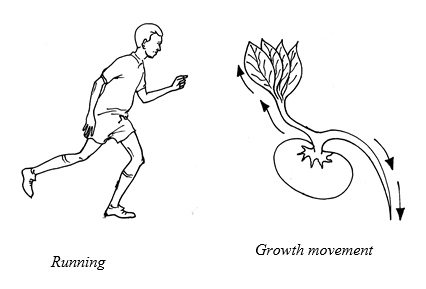
TOPIC 1: INTRODUCTION TO BIOLOGY | BIOLOGY FORM 1
that is, they are aware of what is happening around them.
they detect these changes.
Plants do not have sense organs but are still able to detect and respond to things like gravity, water and light.
TOPIC 1: INTRODUCTION TO BIOLOGY | BIOLOGY FORM 1
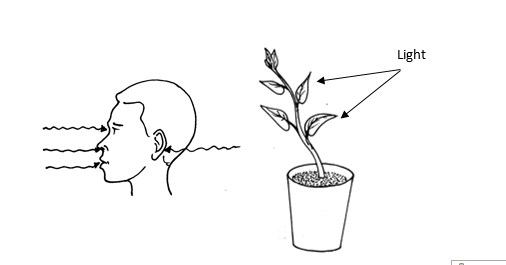
TOPIC 1: INTRODUCTION TO BIOLOGY | BIOLOGY FORM 1
were once living things.
carnivores (e.g. lions) eat other animals, and omnivores (e.g. humans)
eat animals and plants.
called photosynthesis.
The process of taking in food, synthesizing it, digesting and oxidizing it to release energy or build the body is called nutrition.
TOPIC 1: INTRODUCTION TO BIOLOGY | BIOLOGY FORM 1
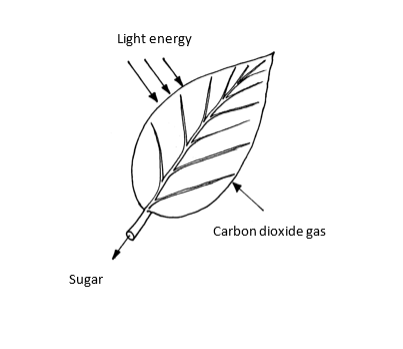
usually involves the use of oxygen.
movement, growth and development, and functioning of body organs.
TOPIC 1: INTRODUCTION TO BIOLOGY | BIOLOGY FORM 1

living things produce wastes such as carbon dioxide, water, urea,
ammonia etc..
TOPIC 1: INTRODUCTION TO BIOLOGY | BIOLOGY FORM 1
would seriously poison the living organism hence they need to be
removed.
of living organisms is called excretion.
Waste products are removed from the body by excretory organs such skin, kidneys, lungs and liver.
TOPIC 1: INTRODUCTION TO BIOLOGY | BIOLOGY FORM 1
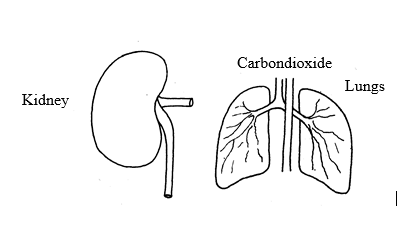
is the process by which living things produce new individuals of their
kind.
TOPIC 1: INTRODUCTION TO BIOLOGY | BIOLOGY FORM 1
which die, the group becomes extinct.
of life when parent generation dies.
beings bear babies; birds hatch chicks; and plants produce seedlings as
new organisms, which eventually grow to mature organisms to replace
those lost by deaths.
TOPIC 1: INTRODUCTION TO BIOLOGY | BIOLOGY FORM 1
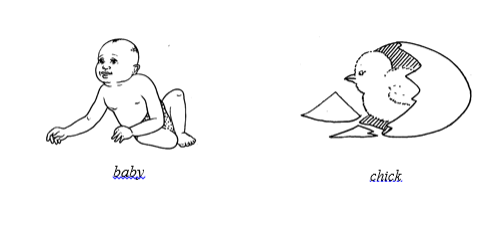
is defined as an irreversible (permanent) increase in size and dry
weight of an organism involving differentiation.
TOPIC 1: INTRODUCTION TO BIOLOGY | BIOLOGY FORM 1
food in order to grow and build up their bodies.
Examples of growth in living things
TOPIC 1: INTRODUCTION TO BIOLOGY | BIOLOGY FORM 1
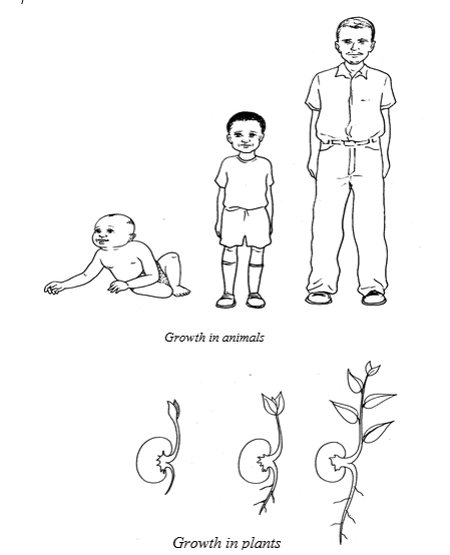
TOPIC 1: INTRODUCTION TO BIOLOGY | BIOLOGY FORM 1
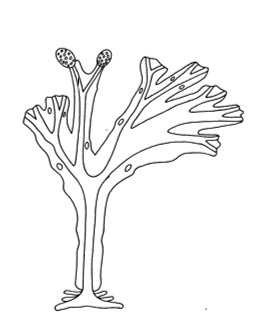
TOPIC 1: INTRODUCTION TO BIOLOGY | BIOLOGY FORM 1
Streptococci
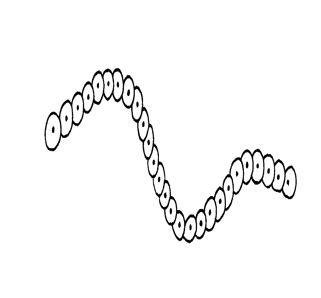
TOPIC 1: INTRODUCTION TO BIOLOGY | BIOLOGY FORM 1
Diplococci

TOPIC 1: INTRODUCTION TO BIOLOGY | BIOLOGY FORM 1
Streptobacilli
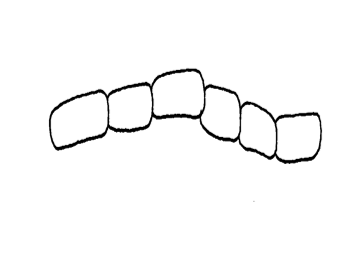
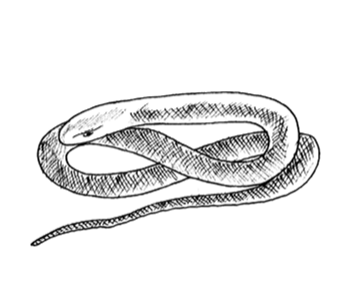
TOPIC 1: INTRODUCTION TO BIOLOGY | BIOLOGY FORM 1
Man
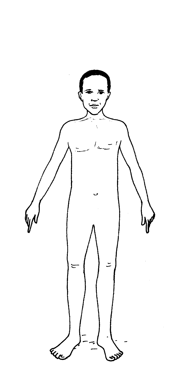
TOPIC 1: INTRODUCTION TO BIOLOGY | BIOLOGY FORM 1
Cow
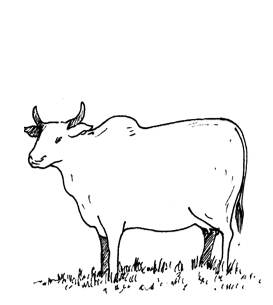

TOPIC 1: INTRODUCTION TO BIOLOGY | BIOLOGY FORM 1
Mushroom

TOPIC 1: INTRODUCTION TO BIOLOGY | BIOLOGY FORM 1
Male fern
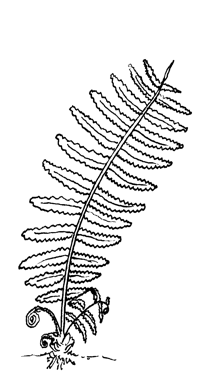
TOPIC 1: INTRODUCTION TO BIOLOGY | BIOLOGY FORM 1
Oak
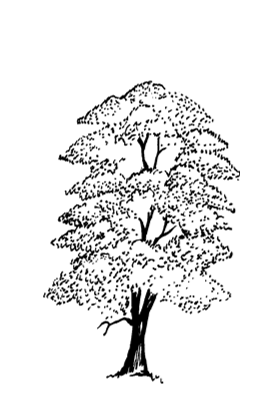
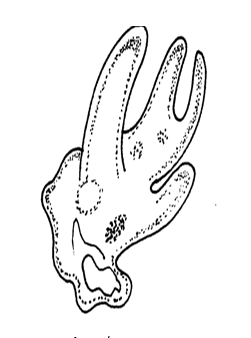
TOPIC 1: INTRODUCTION TO BIOLOGY | BIOLOGY FORM 1
Fucus (bladderwrack)

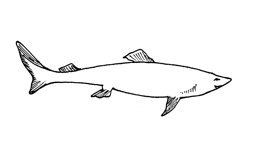
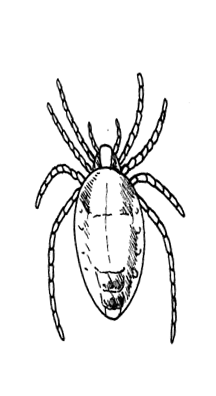
TOPIC 1: INTRODUCTION TO BIOLOGY | BIOLOGY FORM 1
Butterfly
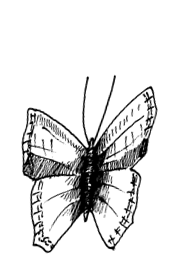
TOPIC 1: INTRODUCTION TO BIOLOGY | BIOLOGY FORM 1
Crab

TOPIC 1: INTRODUCTION TO BIOLOGY | BIOLOGY FORM 1
Millipede

TOPIC 1: INTRODUCTION TO BIOLOGY | BIOLOGY FORM 1
Frog

TOPIC 1: INTRODUCTION TO BIOLOGY | BIOLOGY FORM 1
A table of differences between living things and non-living things
| Living things | Non-living things |
| They respire | Do not respire |
| They grow | Do not grow |
| They respond to stimuli | Do not respond to stimuli |
| They reproduce | Do not reproduce |
| They excrete | Do not excrete |
| They feed | Do not feed |
| They move | Do not move |
The main branches are botany and zoology Botany is a branch of biology which deals with the study of plants.
TOPIC 1: INTRODUCTION TO BIOLOGY | BIOLOGY FORM 1
TOPIC 1: INTRODUCTION TO BIOLOGY | BIOLOGY FORM 1
TOPIC 1: INTRODUCTION TO BIOLOGY | BIOLOGY FORM 1
a branch of biology that deals with relationship among living things
and between organisms and their surroundings.
ecology is called an ecologist
Diagram representing branches of Biology
TOPIC 1: INTRODUCTION TO BIOLOGY | BIOLOGY FORM 1
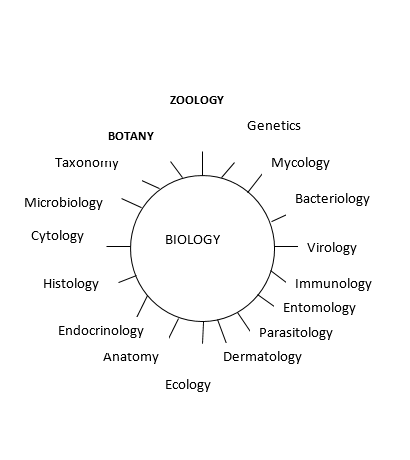
TOPIC 1: INTRODUCTION TO BIOLOGY | BIOLOGY FORM 1
This is the study of structure of endocrine glands and the hormones
associated by them.
TOPIC 1: INTRODUCTION TO BIOLOGY | BIOLOGY FORM 1
Is devoted to the study of organisms that can be seen only with a
microscope e.g. bacteria, viruses, some fungi and some protoctists.
The following is an outlines of why the study of biology is important:
TOPIC 1: INTRODUCTION TO BIOLOGY | BIOLOGY FORM 1
It helps us to understand ourselves better since we are living things.
Skills and knowledge of biology can be applied to other scientific fields such
as agriculture, forestry medicine, nutrition, pharmacy and veterinary
science.
It helps us to understand our environment better and principles of conserving it.
Biology
helps to answer some important questions such as, what do living things
need, why do we resemble with a monkey, why do frogs lay many eggs but
only few become adults?
Knowledge of biology helps us to improve
our health since causes, symptoms, transmission and treatment are of
various diseases are studied in biology.
Knowledge of biology helps us to avoid our selves from magical beliefs, superstitions and other traditional taboos.
TOPIC 1: INTRODUCTION TO BIOLOGY | BIOLOGY FORM 1
Knowledge
of genetics helps us to clear some common doubts about certain
inherited characteristics e.g. albinism, sickle cell anaemia,
haemophilia, etc.
Knowledge of the structure and chemical composition of the organisms enable us to acquire food, clothes and shelter from them.
Veterinary science (Veterinary medicine)
TOPIC 1: INTRODUCTION TO BIOLOGY | BIOLOGY FORM 1
large and small animals.
diseases can be transmitted to human beings e.g. rabies, tuberculosis,
tularemia (rabbit fever) anthrax etc.
required for successful study of veterinary science.
TOPIC 1: INTRODUCTION TO BIOLOGY | BIOLOGY FORM 1
is concerned with production of useful plants and animals through
farming system.
provides materials for clothing and shelter.
for making many industrial products such as paints and medicines.
breeding.
TOPIC 1: INTRODUCTION TO BIOLOGY | BIOLOGY FORM 1
early maturity and high yield products.
pests can only be overcome by applying biological knowledge.
is a large area of land covered with trees.
trees.
TOPIC 1: INTRODUCTION TO BIOLOGY | BIOLOGY FORM 1
flowers.
benefit.
timber and management of such valuable forest resources such as water,
wildlife, grazing areas and recreational areas.
helps in improving the qualities of the trees through manipulating the
genetic constitution of the particular plant species.
TOPIC 1: INTRODUCTION TO BIOLOGY | BIOLOGY FORM 1
soil and water determine the type of plants to be grown which entirely
applies biological knowledge.
pests applies biological principles.
TOPIC 1: INTRODUCTION TO BIOLOGY | BIOLOGY FORM 1
drugs are made depending on the chemical composition of the body of an
organism and how they can react with such medicines.
biology also helps to know the effects of drugs on living things
(pharmacology) and possible remedies to be taken.
is the science and art of preserving health and treating illness.
careful study and experimentation.
depends on how skilfully medical practitioners apply their knowledge in
dealing with patients.
TOPIC 1: INTRODUCTION TO BIOLOGY | BIOLOGY FORM 1
relieving suffering and maintaining the dignity of sick people.
treat and prescribe the right medicine to cure the disease.
knowledge will also help them to offer education to the patients on how
to prevent themselves from the diseases e.g. purifying drinking water,
vaccination against polio, measles and other diseases.
TOPIC 1: INTRODUCTION TO BIOLOGY | BIOLOGY FORM 1
is the science which deals with food and how the body uses it. People,
like all living things need food to live.
the body needs to build and repair its tissues and to regulate its
organs and systems.
perform.
required by an individual based on its quality and quantity.
A table showing differences between plants and animals
TOPIC 1: INTRODUCTION TO BIOLOGY | BIOLOGY FORM 1
| PLANTS | ANIMALS |
| (i)They are autotrophic, i.e. they can make their own food | They are heterotrophic i.e. they feed on complex organic compounds |
| (ii)Contain chlorophyll, can undergo photosynthesis. | No chlorophyll, cannot undergo photosynthesis |
| (iii)Growth occurs in some parts only i.e. root and shoot tips. | Growth occurs in all parts of the body. |
| (iv)They have branched bodies | They have compact bodies |
| (v)No nerves, muscles, blood system or special sensory cells. | Have nerves, muscles, blood system and special sensory cells. |
| (vi)Usually rooted in the ground and do not move from place to place. | Not rooted in the ground, move to get food and escape enemies. |
| (vii)Have no digestive system | Have digestive system needed to break down food |
| (viii)Cells of plants have cell walls | Cells of animals have no cell walls |
Procedure:Go around the school surroundings.
TOPIC 1: INTRODUCTION TO BIOLOGY | BIOLOGY FORM 1
| List of living things | List of non-living things |
Logos and Lagos
Logos and phyla
Bios and logos
Bios and phyla
Nutrition
Reproduction
Growth
Dancing
Botany
Dermatology
Ecology
Zoology
Botanist
Virologist
Zoologist
Ecologist
Bean plant
Sand
Lizard
Rat
Growth
Reproduction
Nutrition
Movement
Excretion
Virology
Endocrinology
Zoology
Removal of waste products
Ability to move from one place to another
Increase in size of an organism
Ability to respond to environmental changes
TOPIC 1: INTRODUCTION TO BIOLOGY | BIOLOGY FORM 1
Reproduction
Movement
Nutrition
Sensitivity
Picture
TOPIC 1: INTRODUCTION TO BIOLOGY | BIOLOGY FORM 1

A person picks up a telephone after hearing it ringing. Which
characteristics of living things is the person showing by this action?
Excretion and reproduction
Respiration and nutrition
Irritability and movement
Respiration and growth
Biology is a branch of science which deals with the study of living things__________________
Dancing is one of the characteristics of living things _________________
A person who studies ecology is called mycologist _________________
Knowledge of biology can help us to improve our health ________________
Living things normally increase in size. The process of increasing in size is called growth ________________
Biology
Cell
Bacteriology
Outline the importance of studying biology
Why are a mosquito and a dog considered to be living things?
A
motor car moves from place to place, obtains energy by combining petrol
with oxygen and produces waste gases.
Does this mean cars are alive?
Look through the seven features, of living things and list those which
do not apply to cars.
Pharmacy
Forestry
Veterinary medicine.
Pharmacy
Veterinary medicine
Agriculture
Forestry
Nutrition
Medicine
just like other science subjects, involves carrying out experiments.
own senses i.e. sight, smell, touch, taste and hearing.
be detected by our sense organs i.e. eye for sight, nose for smell, skin
for touch, tongue for taste and ear for hearing.
The body sense organs
TOPIC 1: INTRODUCTION TO BIOLOGY | BIOLOGY FORM 1

Take measurements of mass, length, temperature and pulse rate
TOPIC 1: INTRODUCTION TO BIOLOGY | BIOLOGY FORM 1
Beam balance – for measuring mass
Thermometer – for measuring temperature
Clock/stopwatch – for measuring time
Ruler – for measuring length
Pulse rate can be measured by using a stethoscope or by pressing the fingers firmly on the skin.
study of biology like any the science subject involves scientific
processes.
include observation, measurement and experimentation.
observation we can learn many scientific phenomena.
by using our own sense organs.
TOPIC 1: INTRODUCTION TO BIOLOGY | BIOLOGY FORM 1
body which are eyes, ears, the nose, the tongue, and the skin.
these organs is specific to a certain type of observation.
can you differentiate between the colors of an egg from that of a ripe
pawpaw? In this case in order to answer this question correctly, you
must be able to make correct observation.
observe differences in colors of the two things given and then tell
their differences.
use our eyes as a sense organ for vision.
to see and differentiate sizes, colours and shapes of various organisms
and hence we can learn about them.
TOPIC 1: INTRODUCTION TO BIOLOGY | BIOLOGY FORM 1
can you distinguish between the sound produced by a singing bird and a
roaring lion? Sometimes you can just use your ears to study various
biological concepts.
which we can use to identify them.
it is easy for a biologist to know an organism just by hearing the
sound without even seeing it.
important organs in scientific studies because they are used to identify
and differentiate sounds of various living organisms.
in the scientific study we need to smell in order to identify and
distinguish between various things.
the smell of a ripe banana from that of a ripe pineapple? As a
scientist you must be able to use your nose as a sense organ effectively
and successfully.
TOPIC 1: INTRODUCTION TO BIOLOGY | BIOLOGY FORM 1
the permission from your teacher or laboratory technician.
use tongue to taste various things.
differentiate various tastes and be able to discover the type of the
taste concerned.
solutions by just tasting using the tongue.
in the laboratory unless you are told do so by the teacher or laboratory
technician.
can use the skin as a sense organ to detect heat, temperature, pressure
and even pain.
cold days you feel cold.
your skin using a block of ice, you can simply tell it by just feeling
the coldness it imparts to the surface of your skin.
group of students are conducting an experiment on ‘food tests’ in the
school laboratory.
study?
TOPIC 1: INTRODUCTION TO BIOLOGY | BIOLOGY FORM 1
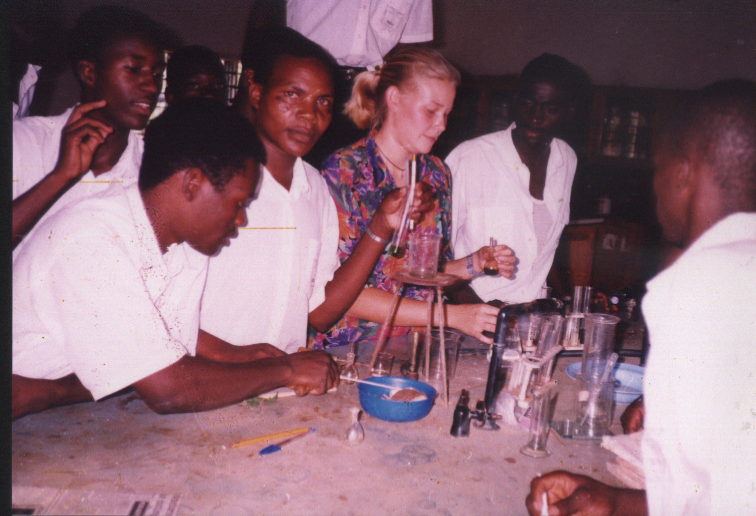
we can use our sense organs to make observations, the observations
alone are not so reliable.
Every sense organ has its weakness.
TOPIC 1: INTRODUCTION TO BIOLOGY | BIOLOGY FORM 1
science lies upon measurable quantities there is a need of measurement.
things.
include mass, temperature, length and pulse rate.
can use eyes to observe the length of various objects.
eyes can just tell which object is longer than the other but can not
tell us what the exact length of each object is.
the common instruments that are used for measuring length in our every
day life.
Tape measure, an instrument for measuring length
TOPIC 1: INTRODUCTION TO BIOLOGY | BIOLOGY FORM 1

scientist or biologist must have a standard way of measuring mass of a
substance.
TOPIC 1: INTRODUCTION TO BIOLOGY | BIOLOGY FORM 1
substance.
instrument for measuring mass of a substance.

TOPIC 1: INTRODUCTION TO BIOLOGY | BIOLOGY FORM 1
can take the measurement of temperature of a substance just by using
our sense organs.
whether a particular thing is hot or cold.
exact temperature of an object.
to be able to know the exact temperature you need to use an instrument
specially designed for measuring the temperature.
the thermometer.
TOPIC 1: INTRODUCTION TO BIOLOGY | BIOLOGY FORM 1
temperature of an object.

TOPIC 1: INTRODUCTION TO BIOLOGY | BIOLOGY FORM 1
Measurement of pulse rate
rate refers to average beating of your heart.
your heart is beating, that is your heart rate, by feeling your pulse.
Sit down comfortably on a chair with the palm of your hand facing upwards.
Gently
place the index and middle fingers of your other hand on your wrist
(see the diagram below).
Can you feel your pulse as a repeated throb?
If
necessary change the position of your finger until you can feel your
pulse rate well.
Count the number of heart beats in one minute.
Repeat step 3 four times.
Write down the number of beats per minute.
Work out the average. This is what is called average heart rate per minute.
It tells you how fast your heat is beating.
TOPIC 1: INTRODUCTION TO BIOLOGY | BIOLOGY FORM 1
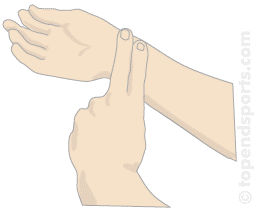
as a science subject involves practical work.
TOPIC 1: INTRODUCTION TO BIOLOGY | BIOLOGY FORM 1
experimentation is necessary.
be followed in conducting any scientific investigation.
include the following:
our day to day life we often come across questions or phenomena which
require explanations.
biologist who will seek to provide answers to them.
was observed that the harvest of tomatoes in Juma’s garden was low
despite frequent irrigation, correct planting techniques, timely
planting and adequate sunlight.
TOPIC 1: INTRODUCTION TO BIOLOGY | BIOLOGY FORM 1
is a tentative explanation for the observation made.
of low yield in the tomato garden, the possible hypothesis could be poor
yield could have been caused by low soil fertility and therefore
application of the fertilizer could increase harvest of the tomatoes in
the garden.
TOPIC 1: INTRODUCTION TO BIOLOGY | BIOLOGY FORM 1
experiment is a series of investigation intended to discover
relationship or certain facts that may lead to finding a problem.
case of low harvest of tomatoes, you are first supposed to construct a
plan of investigation as follows:
two plots, A and B, from the same garden and subject both of them to
the same conditions as before.
A don’t put any fertilizers (plot A will be your control plot).
TOPIC 1: INTRODUCTION TO BIOLOGY | BIOLOGY FORM 1
setting up an experiment, a researcher must observe and record data.
skin.
obtained X kg in plot A and Y kg in plot B.
a researcher has collected data, he should try to explain the meaning
of data in relation to the purpose of the experiment.
garden experiment, the harvest in plot A was little compared to the
harvest in plot B.
these plots, all the conditions were the same except that in plot A no
fertilizers were applied while in plot B fertilizers were applied.
Therefore, high harvest in plot B was a result of applying fertilizers.
TOPIC 1: INTRODUCTION TO BIOLOGY | BIOLOGY FORM 1
obtained if the experiment is repeated under the same conditions.
the end of investigation, a researcher must draw conclusion.
conclusion is based on the collected data.
confirmation or rejection of the hypothesis under investigation.
the tomato garden experiment, the results have shown that application
of fertilizers has increased the harvest of tomatoes.
harvest of tomatoes was caused by poor soil fertility.
TOPIC 1: INTRODUCTION TO BIOLOGY | BIOLOGY FORM 1

Aim: observing different conditions and substances using various sense organs: Materials: flowers of different colors, hot water, ice, a bottle of perfume, whistle, lemon, knife.
TOPIC 1: INTRODUCTION TO BIOLOGY | BIOLOGY FORM 1
Take the different flowers provided. Name the color of each flower.
Open the bottle of perfume, try to smell it. What is the smell of the perfume?
Use a knife to cut the onion. Where in your body do you feel sensation when cutting the onion?
Take
two beakers. One of the beakers put hot water and the other put ice
block with a little amount of water.
Dip a finger in a beaker containing
hot water and do the same for a beaker containing ice block.
TOPIC 1: INTRODUCTION TO BIOLOGY | BIOLOGY FORM 1
What
sensation did you feel in the two beakers?
Take a whistle and try to blow it using your mouth. What is coming out of the blow?
each of the stimulus experienced in procedures 1-5 name the sense organ
involved in detection of each stimulus and present your results as
shown in the table below.
example.
| Procedure | Stimulus | Sense organ involved for detection |
| 1 | Colour | Eyes |
| 2 | ||
| 3 | ||
| 4 | ||
| 5 |
Take 5 Tilapia fishes and number them as 1 to 5.
Take Tilapia fish number 1, place it on a board and measure its length.
Take Tilapia fish number 1, put it on a weighing scale and record its mass.
Repeat steps 2 and 3 for Tilapia fish number 2, 3, 4, and 5.
Present your results in a tabular form as shown
TOPIC 1: INTRODUCTION TO BIOLOGY | BIOLOGY FORM 1
| Tilapia fish no | Length (cm) | Mass (g) |
| 1 | ||
| 2 | ||
| 3 | ||
| 4 | ||
| 5 |
Which Tilapia has the greatest length?
Which Tilapia has a greatest mass?
Is there any Tilapia fish which has a shorter length but has a greater mass than the longer one?
Arrange the fishes in order of their increasing
One of the following can be used to make observation during scientific investigation
TOPIC 1: INTRODUCTION TO BIOLOGY | BIOLOGY FORM 1
Nose
Blood vessels
Teeth
Lung
Beam balance
Thermometer
Ruler
Hand lens
Eye for sight
Skin for touch
Tongue for vision
Nose for smell
Chemical balance
Stop watch
Measuring cylinder
Thermometer
A third step in scientific investigation is
TOPIC 1: INTRODUCTION TO BIOLOGY | BIOLOGY FORM 1
Hypothesis
Problem identification
Experimentation
Conclusion
An idea
A school of thought
An intelligent guess
TOPIC 1: INTRODUCTION TO BIOLOGY | BIOLOGY FORM 1
An opinion
Problem identification
Conclusion
Observation and data recording
Hypothesis formulation
Hypothesis
Theory
TOPIC 1: INTRODUCTION TO BIOLOGY | BIOLOGY FORM 1
Law
Conclusion
Mass
Length
Pulse rate
Temperature
the five sense organs used to make observation during scientific
investigation and state the senses perceived by each sense organ.
Define the following terms:
TOPIC 1: INTRODUCTION TO BIOLOGY | BIOLOGY FORM 1
Hypothesis
Experimentation
Large windows and big space to allow enough air and light for better ventilation and visibility respectively.
TOPIC 1: INTRODUCTION TO BIOLOGY | BIOLOGY FORM 1
Shelves – for keeping chemicals, specimens, apparatus and models.
Supply of gas, electricity and water
Working benches
An emergence door in case of danger occurs.
Preparation room
special care.
they need a special attention when working with them.
Don’t enter in the laboratory without permission from the teacher or laboratory technician.
TOPIC 1: INTRODUCTION TO BIOLOGY | BIOLOGY FORM 1
Do not play, or run unnecessarily in the laboratory.
Do not eat or drink in the laboratory.
Do not use chemicals or handle apparatus or specimens without instruction from the teacher or laboratory technician.
Any accident or damage of apparatus must be reported.
Label chemicals and specimens to avoid confusion.
Always keep flammable substances away from flames.
Turn off water and gas taps after use.
Never point the open end of the test tube to your fellow or yourself when heating.
Never smell substances, specimens, chemicals or gases directly.
Wash your hands with soap after the experiment.
Clean the apparatus and benches after the experiment.
Return the apparatus and chemicals to their normal position after use.
Dissecting kits
Models of different organs and systems
Refrigerators and ovens for storing and drying specimens
Animal keeping units
TOPIC 1: INTRODUCTION TO BIOLOGY | BIOLOGY FORM 1
Chemicals designed for biological experiments
Preserved specimens of living things
Gases, electricity and water supply.
let students visit the chemistry laboratory, physics laboratory, the
school library, classroom and school store and allow them to perform the
following.
Make a list of items that are found in each of the above named areas.
Compare the list with those which are found in the biology laboratory.
Construct
a table of differences showing a list of items which are found in the
biology laboratory and those which are found in the above named school
facilities as shown below.
TOPIC 1: INTRODUCTION TO BIOLOGY | BIOLOGY FORM 1
List items which are found in both the biology laboratory and other school facilities listed above and compare the differences.
| Facility / Building | Items |
| Biology laboratory | |
| Chemistry laboratory | |
| Physics laboratory | |
| School library | |
| Classroom | |
| School store |
Warning signs on laboratory chemicals and apparatus
TOPIC 1: INTRODUCTION TO BIOLOGY | BIOLOGY FORM 1
of the chemicals and apparatus used in biology laboratory may be
harmful or dangerous.
whether the chemical is toxic, flammable, oxidizing, explosive or
irritant/harmful.
containers of modern chemicals carry special chemical warning signs as
indicated below.
substances can cause death.
TOPIC 1: INTRODUCTION TO BIOLOGY | BIOLOGY FORM 1
breathed in or absorbed through the skin.
include acids and alkalis, lead II acetate and potassium dichromate.

substances are substances which can catch fire easily.
substances include petrol, alcohol, Thomas Baker (Phosphorus yellow or
phosphorus red) and potassium metal.
fast and therefore should not be brought near open flames.
is as indicated above.
TOPIC 1: INTRODUCTION TO BIOLOGY | BIOLOGY FORM 1
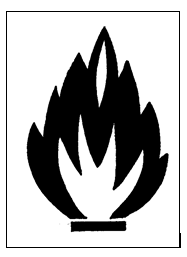
substances attack and destroy living tissues.
floor, desks as well as metals, examples of corrosive substances are
concentrated acids, e.g. sulphuric acid, hydrochloric acid, nitric acid
and concentrated alkalis e.g. sodium, potassium and ammonium hydroxides.
go to the sink and wash with a lot of water. The symbol is shown above.
TOPIC 1: INTRODUCTION TO BIOLOGY | BIOLOGY FORM 1

oxidant is a chemical or substance which accelerates burning. Small
fires can be made big in the presence of oxidizing agent.
oxidizing agents include potassium permanganate, potassium chlorate, and
zinc nitrate.
TOPIC 1: INTRODUCTION TO BIOLOGY | BIOLOGY FORM 1
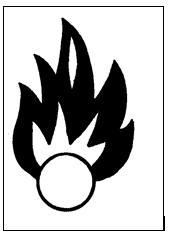
An explosion is a forceful rapid reaction which involves random throwing of particles
TOPIC 1: INTRODUCTION TO BIOLOGY | BIOLOGY FORM 1
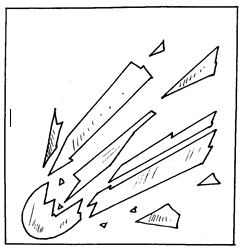
substances have a long term effect. They do not kill immediately. They
have a cumulative effect.
TOPIC 1: INTRODUCTION TO BIOLOGY | BIOLOGY FORM 1
Therefore careful handling is required.

substances cause pains on the skin or eyes.
health if they come into contact with the skin or eyes for too long.
water ferrous sulphate and manganese (IV) oxide

TOPIC 1: INTRODUCTION TO BIOLOGY | BIOLOGY FORM 1
Record your results as shown in the table that follows.
TOPIC 1: INTRODUCTION TO BIOLOGY | BIOLOGY FORM 1
| Chemical container | Warning sign |
Microscopes
Hand lenses
Thermometers
Dissecting kits
Mortar and pestle
Dissecting trays
Delivery tubes
Measuring cylinders
Bunsen burners
Test tubes
Specimen bottles
Ovens
A pair of scissors
Chemical balance
Funnel
Test tube racks
Test tube holders
Beakers
Forceps
Surgical blades
Microscope slides
Droppers
Spatula
Corks
TOPIC 1: INTRODUCTION TO BIOLOGY | BIOLOGY FORM 1
Glass straws
Fridge/refrigerator
Mounted needle
Beam balances
Glass rods
Scalpels
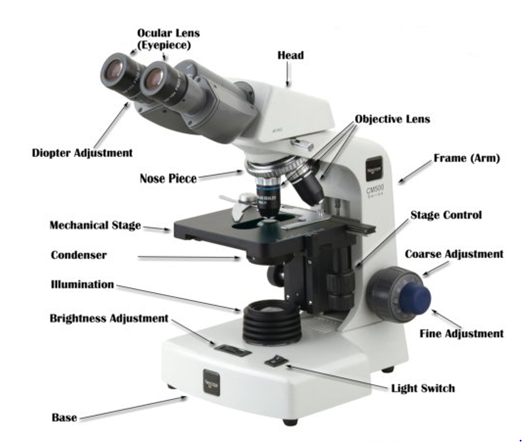

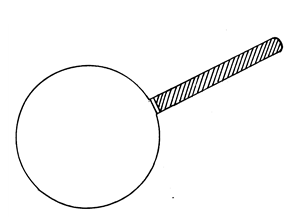
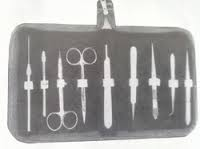
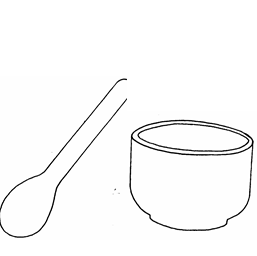


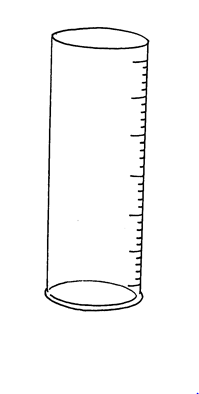




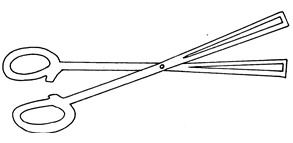
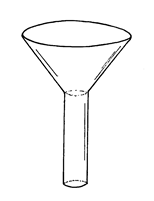


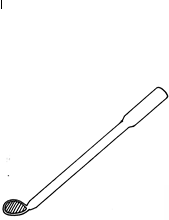
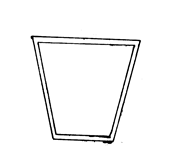





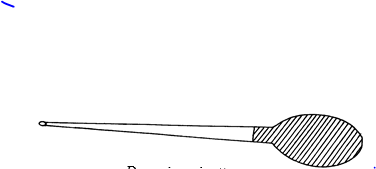

Benedict’s solution
Lime water (calcium hydroxide)
Sodium hydroxide (slaked lime)
Cobalt chloride
Hydrochloric acid
Copper (II) sulphate
Sudan III
Alcohol
Stains e.g. carmine red, methylene blue
Sodium bicarbonate
Potassium permanganate
Iodine solution
A biology laboratory is a place where biological experiments are conducted……………………………….
Everything in the laboratory can be tasted ………………
Warning signs can help someone to avoid accident in the laboratory…………………………………………………
Working benches
Large windows and big space
Supply of gas, electricity and water
Kitchen
Toxic
Flammable
Explosive
Irritant
Chemical balance
Measuring cylinder
Thermometer
Barometer
Benedict’s solution
Potassium iodide
Sodium acetate
Barium chloride
Fridge, a pair of scissors, surgical blades
Microscope, test tube, thermometer
Dissecting kit, scalpel, beaker
Meter bridge, pendulum bob and burette.
Explosive substance
Oxidizing agent
Flammable substance
Corrosive substance

Used for placing specimen during dissection
An apparatus used for stirring solution
A substance which accelerates burning
Do not play or run in the laboratory
A common reagent in the biology laboratory
Laboratory rule
Oxidant
Sudan III
Dissecting kit
Glass rod
Laboratory
Warning sign
toxic
flammable
explosive
harmful
Specimen bottles
Test tube holders
Beam balance
Beaker
Mortar and pestle
Measuring cylinder
Mortar and pestle
Funnel
Tripod stand.
of the living world is too small for human eyes to see.
only see objects that are larger than 0.1mm.
microscope is an instrument used for viewing objects which are too
small to be seen by our naked eyes.
important tools of science.
Physicians and biologists, for example, use microscopes to examine bacteria and blood cells.
Material
scientists and engineers use microscopes to study the crystal
structures within metals and alloys (metal mixtures) and to examine
computer chips and other tiny electronic devices.
Compound or light microscope
Electron microscope
optical microscope has one or more lenses that refract (bend) the light
rays that shine through or are reflected by the specimen being
observed.
than it is.
glass is the simplest optical microscope, has only one lens.
magnifying glasses can magnify an object by 10 to 20 times.
compound or light microscope uses two or more sets of lenses to provide
higher magnifications.
referred to as lens system.
one objective, the lens system and ocular are mounted at opposite ends
of a tube.
mounted in a rotating nose piece connecting to the end of the tube
opposite the ocular.
nose piece to align one of the objectives with the opening in the end of
the tube.
Electron microscope – Uses electrons to illuminate the specimen and can
reveal much more structures than light microscope can do.

Eyepiece – Magnify objects under observation since it consists of magnifying lenses.
Body tube – Hollow tube attached to the arm. Its function is to hold eyepiece lens and revolving nose piece.
Revolving nose piece – Holds objective lenses in place. Position of the objective lenses can be changed by manipulating the revolving nose piece.
Coarse adjustment knob – It lowers and raises the body tube so that a clear image is obtained.
Fine adjustment knob – Raises and lowers the body tube to obtain a fine focus.
Objective lens – Brings image into focus and magnifies it.
Stage – This is a place where specimen to be observed is placed
Clips – Hold the slide or specimen in position
Mirror – Reflects and directs light to the object under observation.
Diaphragm – Is an aperture that regulates the amount of light passing through the condenser to illuminate the specimen
Condenser – Concentrates light reflected by the mirror.
Base or stand – Supports the microscope steadily
Arm or limb – Supports the body tube and stage. It is used to hold the microscope
Hinge screw – Raises and lowers the stage.
magnifying glass magnifies an object by 10 times.
by multiplying the eyepiece lens magnification and objective lens
magnification.
| Eye piece lens magnification | Objective lens magnification | Total magnification |
| 5 | 20 | X100 |
| 10 | 20 | X200 |
| 15 | 10 | X150 |
| 10 | 25 | X250 |
| 20 | 20 | X400 |
Turn on your microscope light
Turn the nose piece so that the small (low power) objective lens clicks into place. Always start with low power lens in place.
Place
the prepared slide on the center of the stage under the clips so that
the object is in the center of the opening. Make sure the cover slip is
on top
With your eye at stage level, use the coarse adjustment
to bring the object and the low power objective lens as near to each
other as possible. The objective lens should not touch the cover slip
Now
with your eye to the eyepiece, slowly move the coarse adjustment to
increase the distance between the object and the lens.
Continue this
until the image is focused.
Adjust the diaphragm so that the object can be seen as clearly as possible
To
observe the object under medium and high powers, rotate the revolving
nose piece to bring the next highest objective lens into position.
Make
sure you hear the ‘click’ to ensure that the objective lens is in place.
Then, focus using the fine adjustment only.
Use both hands to carry the microscope.
One hand should hold the base and the other hand should hold the arm.
Always place the microscope on the desk or table carefully and gently and never place it at the edge of the bench.
Keep the microscope in an upright position when using liquids or when not in use.
Keep the stage clean and dry.
If any liquids are spilled on the microscope, wipe them up immediately with a piece of tissue.
Focus with the low-power objective lens first.
Focus by moving the lens away from the slide, that is, by increasing the working distance.
Consult your teacher if the lenses are dirty.(viii) Consult your teacher if the adjustments do not work freely.
When your work is completed, move the low power objective lens into place and remove your slide.
Keep your microscope covered when it is not in use and keep your work area clean and tidy.
type of microscope uses a beam of electrons rather than a beam of light
to produce magnified images.
than those of visible light.
resolve much finer detail than light microscope can do.
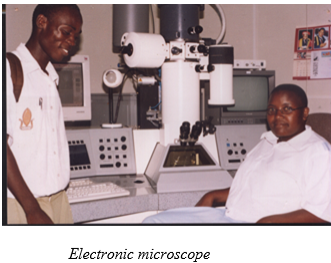
Transmission
electron microscope (TEM) This type of a microscope passes a broad beam
of electrons through a specimen slice a few hundred angstroms thick.
Scanning electron microscope (S E M) This microscope scans a focused beam across the surface of the specimen.
structure of the tip of an extremely sharp metal needle.
field applied to the tip repels charged helium, neon or argon atoms
which spread out and strike a special screen.
atoms strike it, forming an image of the arrangement of atoms in the
metal.
Electron microscope
Metal microscope
Light microscope
Compound microscope
Which part of the microscope holds objective lenses?


If some one desires to be updated with hottest technologies after that
he must be visit this site and be up to date daily.
0mniartist asmr
I love your blog.. very nice colors & theme. Did you create this website yourself or did
you hire someone to do it for you? Plz reply as I’m looking to create my
own blog and would like to find out where
u got this from. cheers asmr 0mniartist
I am going to go ahead and bookmark this post for my sis for a research project for class. This is a sweet web site by the way. Where did you obtain the template for this web page?
I don’t know whether it’s just me or if everybody else experiencing issues with your website.
It seems like some of the written text on your posts are running off the screen. Can somebody else please provide feedback and let me
know if this is happening to them too? This might be a issue with my web browser because I’ve had this
happen previously. Appreciate it
Howdy! I understand this is kind of off-topic but I had to ask.
Does building a well-established blog such as yours take a massive amount work?
I am brand new to operating a blog however I do write in my journal
everyday. I’d like to start a blog so I will be able to share my own experience
and views online. Please let me know if you have any
suggestions or tips for new aspiring bloggers. Thankyou!
At this moment I am going away to do my breakfast, after
having my breakfast coming again to read more news.
Great work! This is the type of information that are supposed
to be shared across the internet. Shame on Google for no longer
positioning this submit higher! Come on over and seek advice from my site .
Thanks =)
Yes, this is a Good one
Fantastic items from you, man. I have have in mind your stuff prior to and you’re
simply too fantastic. I actually like what you’ve received right here,
certainly like what you’re stating and the way in which in which
you are saying it. You are making it enjoyable and you still care for to keep it smart.
I cant wait to read much more from you. That is really a wonderful
website.
Thanks a bunch for sharing this with all folks you actually understand what you’re
talking approximately! Bookmarked. Please also seek advice from my website =).
We will have a link trade agreement between us
bookmarked!!, I like your site!
Do you mind if I quote a few of your articles as long
as I provide credit and sources back to your webpage?
My website is in the very same niche as yours and my users would certainly benefit from a lot of the information you present here.
Please let me know if this ok with you. Thank you!
Hi there! This is kind of off topic but I need some guidance from an established blog.
Is it very difficult to set up your own blog?
I’m not very techincal but I can figure things out pretty fast.
I’m thinking about making my own but I’m not
sure where to start. Do you have any ideas or suggestions?
Thank you
scoliosis
What a stuff of un-ambiguity and preserveness of precious experience about
unpredicted emotions. scoliosis
scoliosis
I blog frequently and I truly thank you for your content.
This great article has really peaked my interest.
I am going to bookmark your site and keep checking for new details about once per week.
I subscribed to your Feed too. scoliosis
I simply could not depart your web site prior to suggesting that I extremely enjoyed the usual info an individual provide to your guests?
Is gonna be again frequently to investigate cross-check new posts
Best view i have ever seen !
It’s in fact very difficult in this busy life to listen news on TV, so I only use world wide web
for that reason, and take the newest information.
It’s not my first time to go to see this web site, i am browsing this web page dailly and take
pleasant data from here every day.
Hello! This post could not be written any better!
Reading through this post reminds me of my previous room mate!
He always kept talking about this. I will forward this page to
him. Fairly certain he will have a good read.
Thanks for sharing!
I loved as much as you will receive carried out right here.
The sketch is attractive, your authored subject matter stylish.
nonetheless, you command get bought an impatience over that
you wish be delivering the following. unwell unquestionably come more formerly again since exactly the same nearly very often inside case you shield this hike.
Great article! We will be linking to this great post on our website.
Keep up the good writing.
Howdy! I could have sworn I’ve been to this website before
but after reading through some of the post I realized it’s
new to me. Nonetheless, I’m definitely glad I found it and I’ll be bookmarking and checking
back often!
I always spent my half an hour to read this
blog’s content everyday along with a mug of coffee.
Hi there, its good paragraph concerning media print, we all understand media is a impressive source of information.